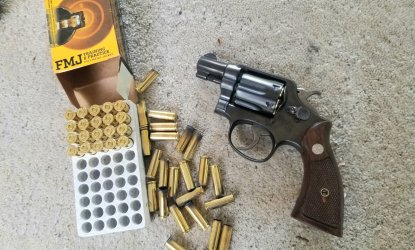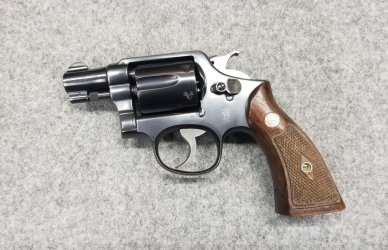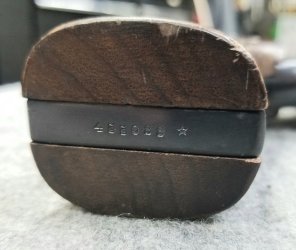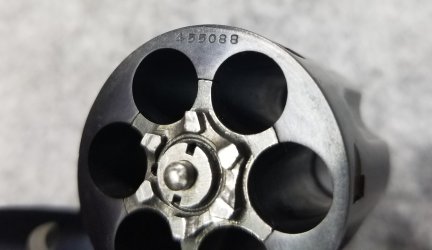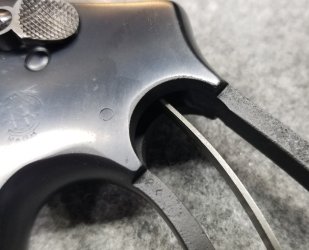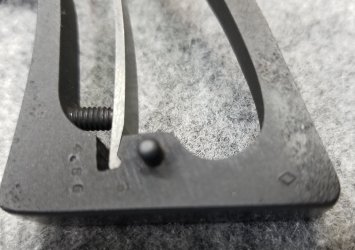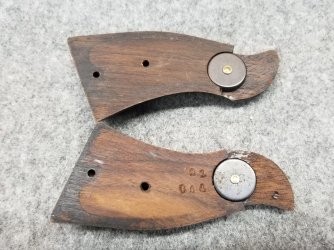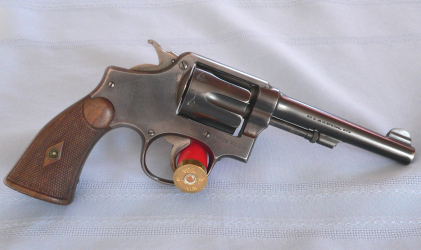Actually, that isn't correct. The so-called "fishhook hammer" is a postwar phenomenon. It is what S&W used once the "high speed" hammer was introduced in 1948. This one is simply the prewar style long action hammer.
Also not accurate. The stud seen here is threaded into the frame from the inside, with the end showing on the outside of the frame. Due to a change order issued on January 18, 1946, the stud was to be pressed into the frame and polished flat on the outside. On the M&P revolvers, this change was implemented on revolvers at approximate serial number S819400, with shipments beginning in about April 1946.
In both cases, the hole went all the way through the frame on the gun's left side. The pressed stud is not obvious because the end is polished flat before the bluing is applied. Usually, with a close look, it can be seen, but it is not as obvious as it was with the threaded stud.

